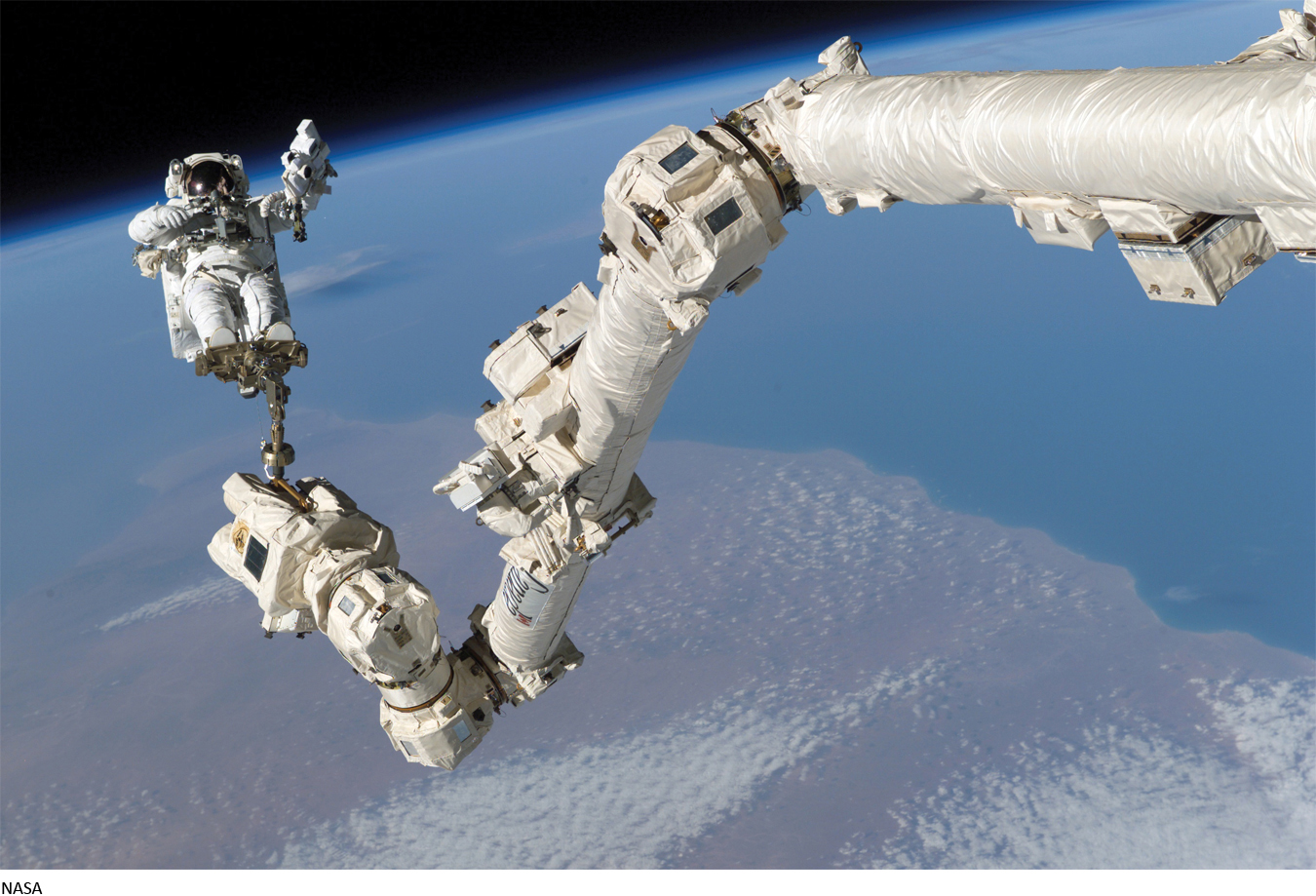63

Analyzing Scales and Motions of the Universe
CHAPTER LEARNING OBJECTIVES
By reading the sections of this chapter, you will learn:
- 3-1 Astronomers of antiquity used observation and reasoning to develop astonishing advances in the study of astronomy
- 3-2 Nicolaus Copernicus devised the first comprehensive Sun-centered model
- 3-3 Galileo’s discoveries of moons orbiting Jupiter and the phases of Venus strongly supported a heliocentric model
- 3-4 Johannes Kepler proposed that planets orbit the Sun in elliptical paths, moving fastest when closest to the Sun, with the closest planets moving at the highest speeds
- 3-5 Isaac Newton formulated three laws relating force and motion to describe fundamental properties of physical reality
- 3-6 Newton’s description of gravity accounts for Kepler’s laws and explains the motions of the planets
64
Sixty years ago the idea of humans orbiting Earth or sending spacecraft to other worlds was regarded as science fiction. Today, science fiction has become commonplace reality. Literally thousands of artificial satellites orbit our planet to track weather, relay signals for communications and entertainment, and collect scientific data about Earth and our universe. Humans live and work in Earth orbit, have ventured as far as the Moon, and have sent dozens of robotic spacecraft to explore all the planets of the solar system. Given these amazing feats of science, you might ask, how did we get here?
We will start our discussion by asking a seemingly simple question that took our ancestors a thousand years to answer: How big is Earth? We will look at how astronomers learned to measure distances, starting with the early astronomers who made bold predictions about the distances to the Sun and Moon, moving on to later generations of astronomers who plotted the distances to stars and discovered the astonishing surprise that our Sun is not the center of our Galaxy.
Then we will learn how Nicolaus Copernicus, Johannes Kepler, and Galileo Galilei helped us understand that Earth is itself one of several planets orbiting the Sun. We will learn, too, about Isaac Newton’s revolutionary discovery of why the planets move in the way that they do. This was just one aspect of Newton’s immense body of work, which included formulating the fundamental laws of physics and developing a precise mathematical description of the force of gravitation—the force that holds the planets in their orbits and holds galaxies of stars together. Gravitation proves to be a truly universal force: It guides spacecraft as they journey across the solar system, keeps satellites and astronauts in their orbits, and moderates how the very galaxies of our universe move.